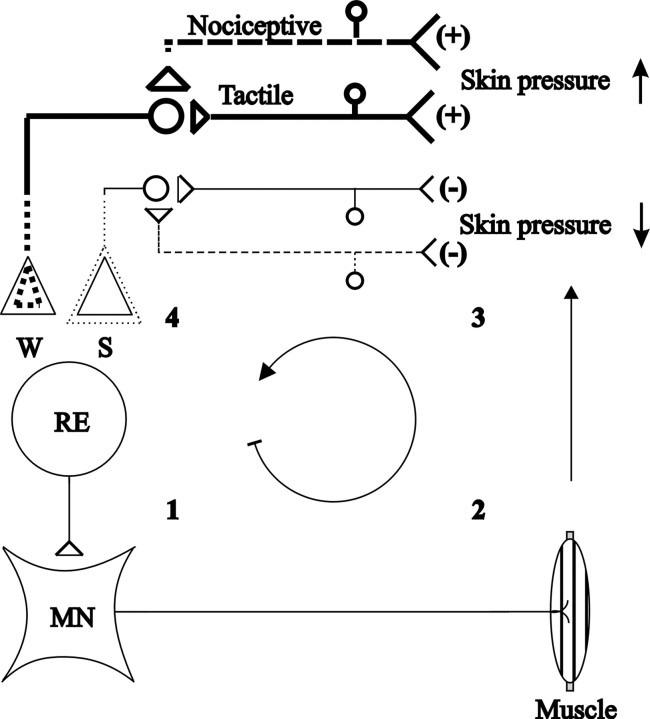Figure 5.
A proposed self-organizing circuitry that uses tactile information related to withdrawal efficacy to adjust the strength of nociceptive connections. One learning cycle (indicated by circular arrow) consists of the following chain of events: (1) spontaneous bursts in REs (i.e., neurons that encode the reflex magnitude); (2) motoneuron (MN) activation leading to a muscle twitch that causes skin movement (indicated by a thin long upward arrow); (3) increased or decreased skin pressure (indicated by upward and downward thick arrows, respectively) resulting in altered sensory input to prereflex encoder interneurons. Thick and thin lines represent afferents from skin areas on the tail from where an increase (+) and decrease (-), respectively, in low-threshold mechanoreceptor input would occur. Dashed lines symbolize the rare occurrence of nociceptive input; and (4) the strength of erroneous connections (receiving increased mechanoreceptive input) between pre-RE interneurons and RE is weakened (W) and that of appropriate ones (receiving reduced mechanoreceptive input) is strengthened (S). Dotted lines indicate that the number of pre-RE interneurons is not known. Evidence that synaptic strength can be reduced if action potentials in postsynaptic neurons precede activity in the presynaptic neuron has been presented for other systems (Debanne et al., 1994; Markram et al., 1997; Zhang and Poo, 2001). Note that although the nociceptive input is not required for the learning to take place in this model, nociceptive input, if present, would indeed cause learning effects.

